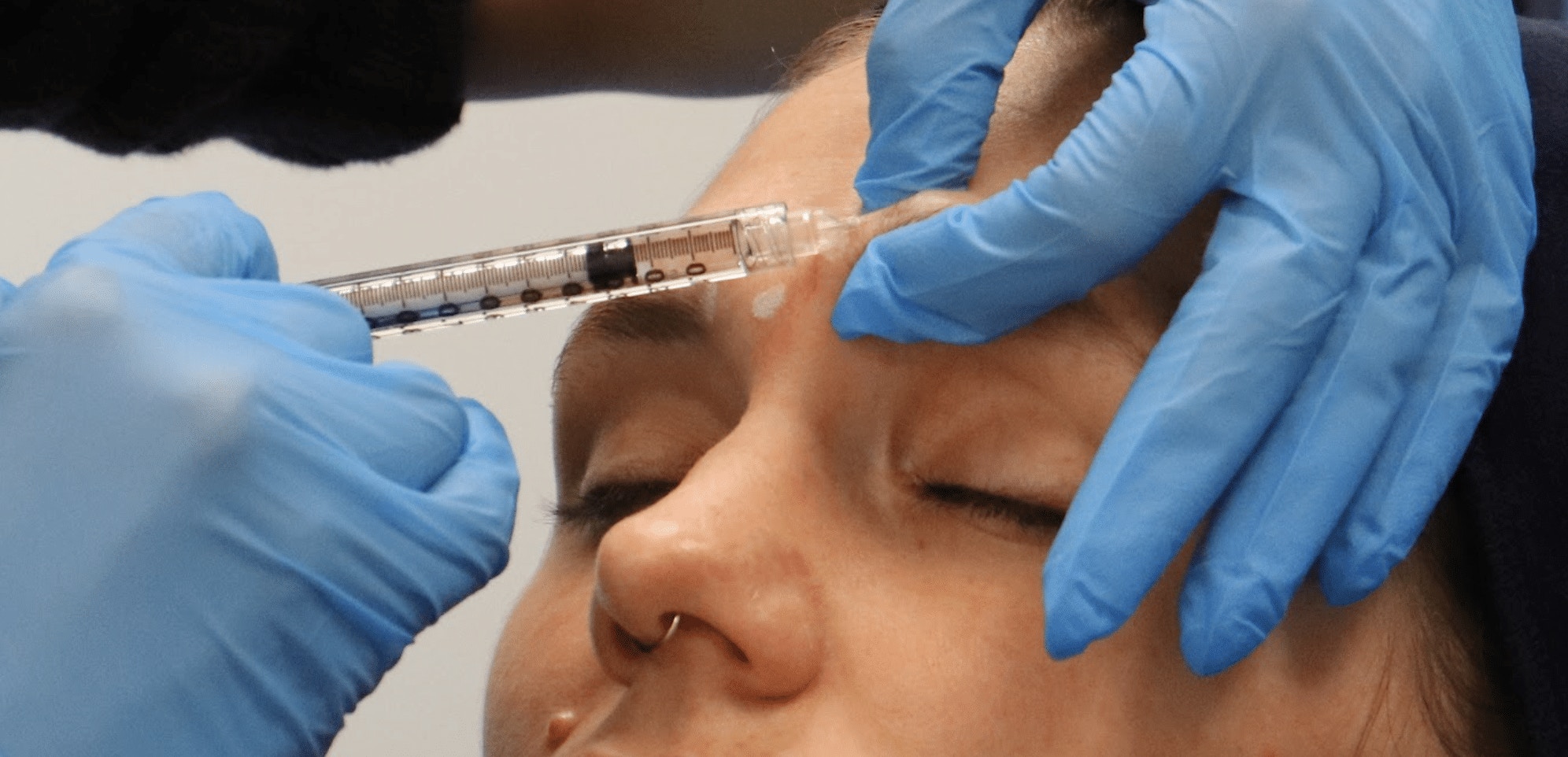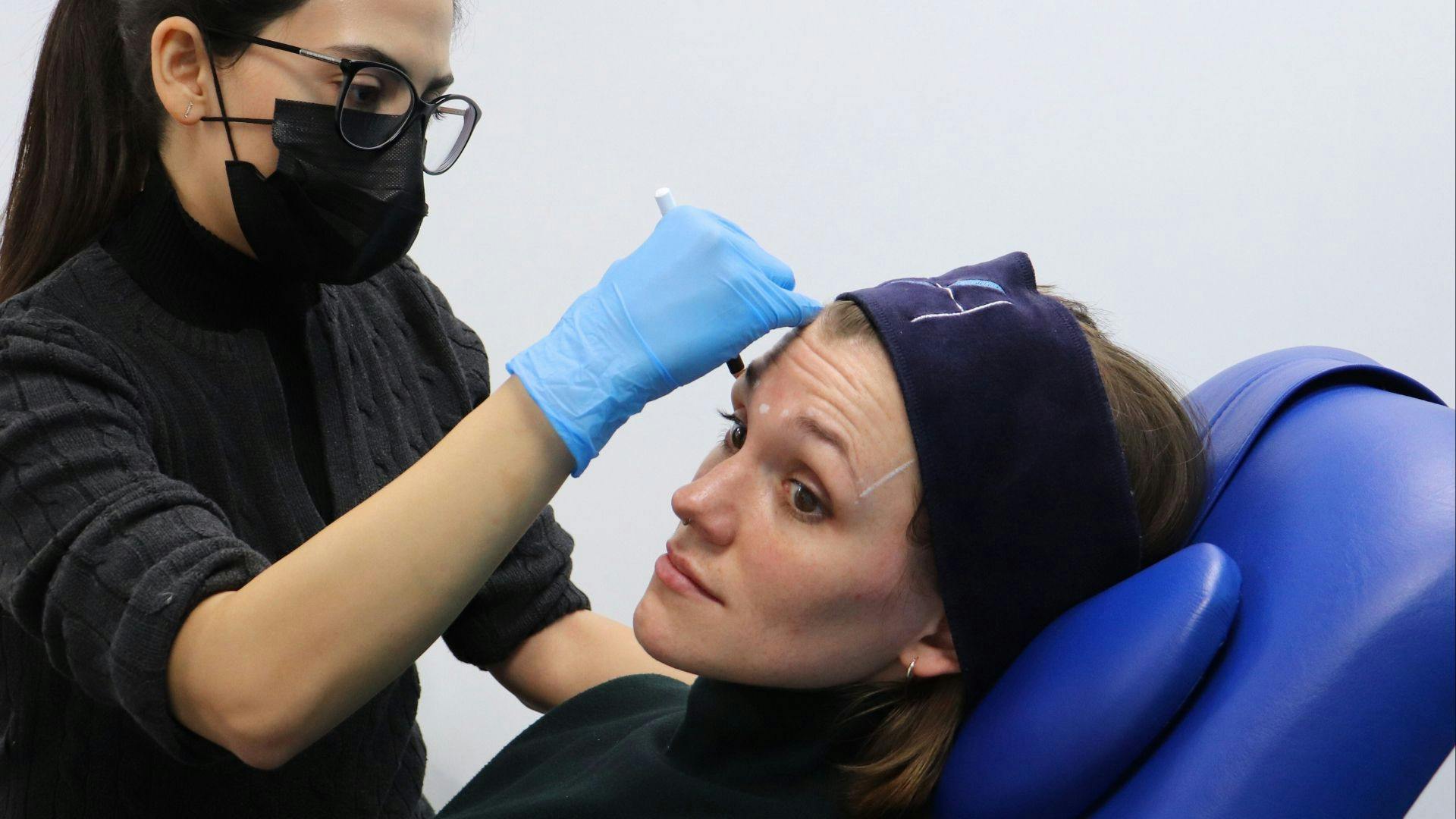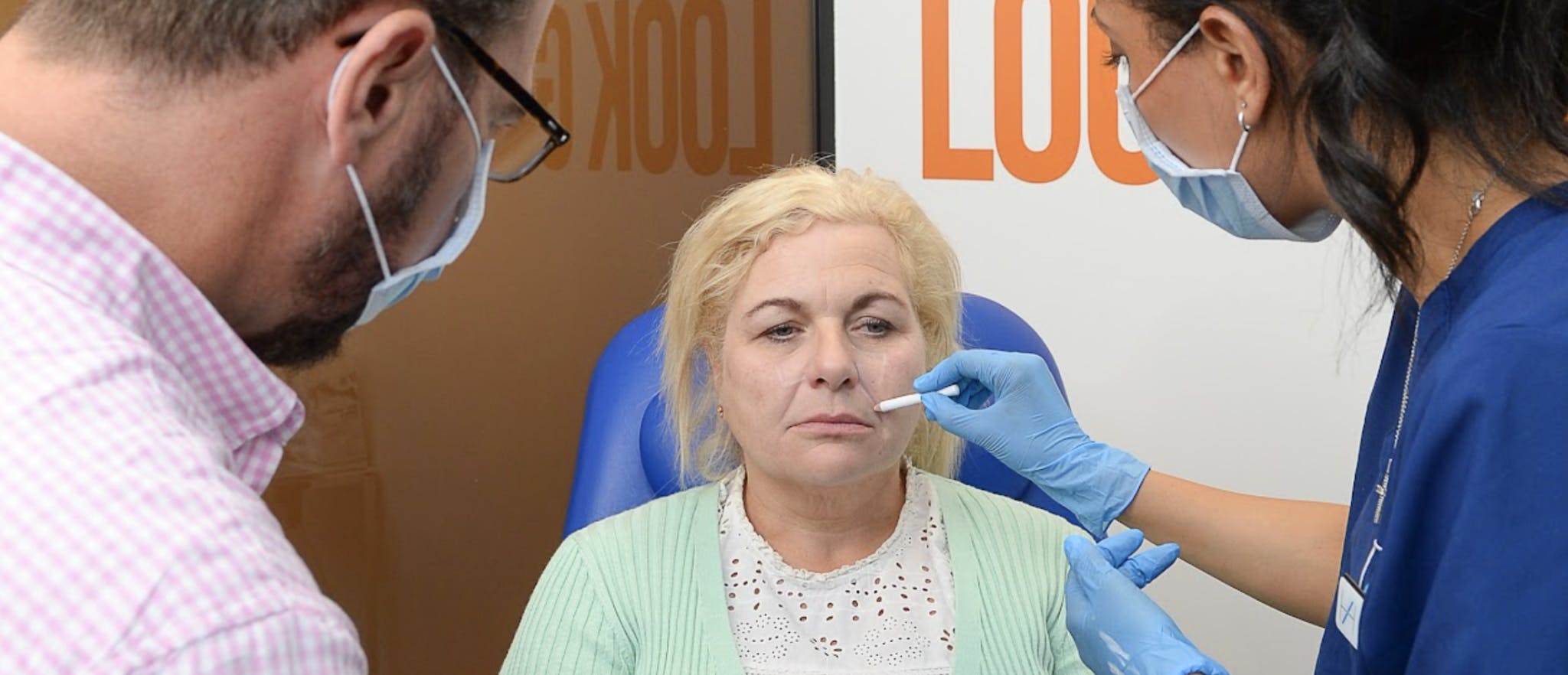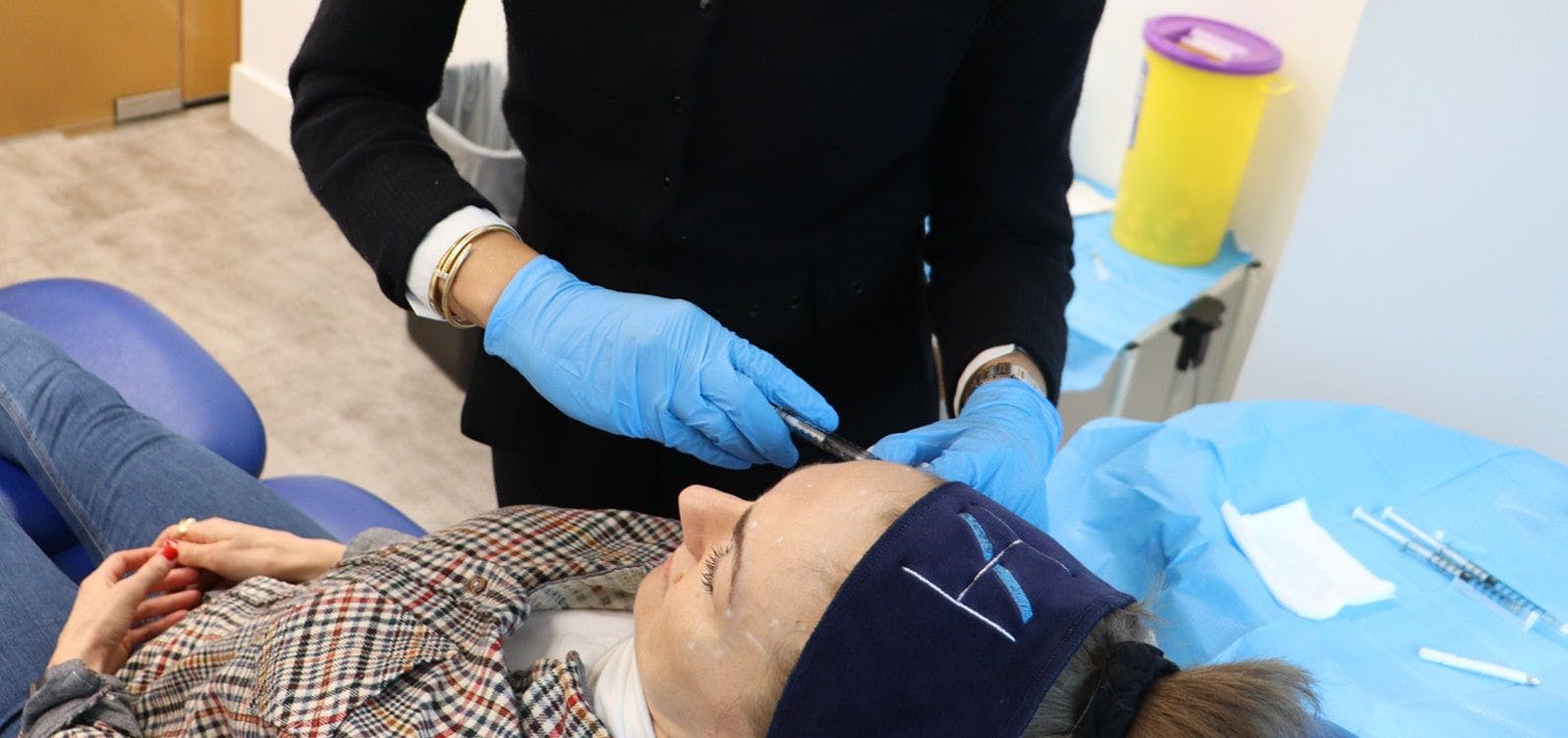Toxin for Forehead Lines V Brow Position

Two of the most common reasons for upper face toxin treatments are to address forehead lines and brow position.
Often these concerns can be addressed through regular, ‘two-three areas’ upper face botox treatments. However, when treating older patients, they may need to choose which issue is most important to them.
Whilst treating the three areas is a ‘bread and butter’ treatment for many new aesthetics practitioners, it’s not without its complexities. Dealing with ageing-related skin laxity and increased brow heaviness when treating older patients is one of these.
Here we explain how toxin for forehead lines and brow position can work in general, and the ‘compromise’ for some mature patients...

Toxin treatments for forehead lines
Treating forehead lines involves injecting the frontalis and/or the glabellar, depending on the location of the wrinkles.
Note that this muscle generally lifts the forehead and toxin will hence have the effect of depressing the eyebrow. The glabella complex depresses, hence toxin will lift the eyebrow. Therefore, the frontalis is usually treated with the glabella complex to mitigate this.
If these forehead lines are dynamic, horizontal lines, you should inject points along the frontalis. Note that static lines may reduce a little but are unlikely to resolve, especially if they are deeply etched.
For concerns regarding vertical frown lines only, you’ll need to treat the glabella as well. This controls our frowning and furrowing movements at the centre of our forehead, between the eyebrows. Specifically, you’ll be injecting the corrugator supercili and procerus muscles.
Facial assessment
Regardless of your patient’s age, when performing your facial assessment, check for the following...
- Dynamic lines vs static lines
- Brow position
- Muscle strength in the region
- Forehead surface area eg. height and width
- The presence of excess eyelid tissue or hooding.
Observe both at rest and in motion. From there, you can establish your patient’s baseline and which treatments are most suitable. Some factors to reflect on include...
- Consider treating just the frown area (glabella) if this is the primary concern. Doing so can alleviate concerns surrounding potential drop of the brow position.
- Where there’s a heaviness to the brow and/or hooded eyes, assess the risk of ptosis.
- When deciding upon your injection points, consider your patient’s specific anatomy. For example, if they have a short forehead, ascertain whether you’ll need to reduce dosage or inject above the hairline. You can then mark up accordingly.
We’ve previously provided a number of expert tips for treating forehead lines and wrinkles, where you can find out more.

Using toxin to adjust brow positioning
When treating forehead lines and wrinkles, you’ll also find the brow position alters due to the action of the frontalis. This is a delicate balance due the muscles working in unison. Brow ptosis is the undesired outcome from overtreatment.
You can also cause a mephisto sign, better known as a Spock, which presents as excessive lateral raising of the eyebrow if the frontalis is not treated adequately laterally.
Whilst this is considered a complication, the technique can be used more moderately to raise the tail of the eyebrow; when raised just enough it can provide a more open-looking eye area. This is often requested by patients who wish to look “less tired”, “more awake” or “refreshed”. They will often call this a “brow lift”.
However, as patients get older, with skin laxity and muscle atrophy, the lifting ability of this treatment can wane.

The compromise for older patients
When treating more mature patients, there can be a compromise between brow position and forehead lines.
“This is a common conversation in clinic, as my patients tend to be aged 45 years+,” advises facial aesthetics specialist Dr Marcus Mehta, STORY Clinics co-founder and Chief Marketing Officer at Harley Academy.
“Around this age our eyes can start to become more hooded and we lose lid elasticity. So, when using botulinum toxin to relax forehead lines and wrinkles in older patients, you might not get as much lift in the brows.”
“When administering upper face botox treatments, always balance your approach to ensure you minimise brow heaviness” he advises.
Dr Marcus adds that, over time, “there may come a time when you need to have the discussion with your patient as to which area they may be willing to compromise on.”

Upper face botox training for doctors, dentists and nurses
What you’ll need to learn to deliver these popular treatments properly, in addition to the relevant anatomy and practical injecting skills, involves an understanding of facial ageing.
At Harley Academy, we offer a range of medical aesthetics training courses for doctors, dentists and nurses.
Upper face botox treatments are taught at every level, right from our entry-level Foundation Training and Core Training in Botox & Dermal Fillers.
As a new injector, you’ll learn how to treat forehead lines using botulinum toxin early in your aesthetics training journey. Learning how to administer safe and effective botox treatments to alter patients’ brow positioning is also covered but may take a little longer to master.
Our flagship course, the Level 7 Diploma in Botox & Dermal Fillers offers a more in-depth study of these treatments. You’ll, of course, learn the safest botox injecting techniques to achieve your patients’ goals, with theory eLearning and hands-on practical mentored injecting.
However, you’ll also learn about both facial and skin ageing alongside detailed anatomical considerations. These will allow you to personalise your treatment plans and approach to every patient, for the best possible results each time. They’ll also inform your injecting so you can minimise the risk of complications.
If you’re a healthcare professional looking to start botox training, or a more experienced injector wanting to hone your medical aesthetics craft when it comes to toxin, our team can help.
All information correct at the time of publication
Download our full prospectus
Browse all our injectables, dermal fillers and cosmetic dermatology courses in one document
By submitting this form, you agree to receive marketing about our products, events, promotions and exclusive content. Consent is not a condition of purchase, and no purchase is necessary. Message frequency varies. View our Privacy Policy and Terms & Conditions
Attend our FREE open evening
If you're not sure which course is right for you, let us help
Join us online or in-person at our free open evening to learn more
Our Partners














STAY INFORMED
Sign up to receive industry news, careers advice, special offers and information on Harley Academy courses and services

